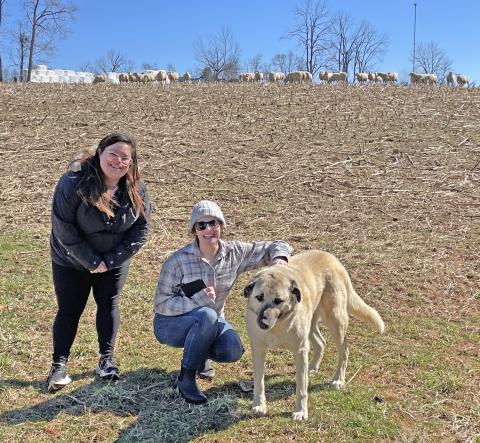Few animals elicit such strong and opposing emotions as the coyote. But love ‘em or hate ‘em, after decades of range expansion across the United States, coyotes are an established predator throughout Ohio. So, the question we can all agree on is: How do we minimize potential conflicts with coyotes in this state? And to answer that question, we need data.
For this project to be successful, we are working to form partnerships with Ohio livestock producers.
Livestock production is a cultural and economic staple in Ohio. Still, it differs in many ways from production in the western US, where most of the coyote-livestock research has been done. Although Ohio produces more sheep and lambs than any other state east of the Mississippi River, the average flock size is 36 head, which means the loss of even a single animal exacts a disproportionate financial toll on local operators. Additionally, Midwest ecosystems are vastly different from those in the West. For any management strategy to effectively protect against coyote predation in Ohio, we need to know more about Ohio coyotes.
Some basic questions include: What do Ohio coyotes eat, and how does their diet change throughout the year? Do male and female coyotes eat the same things? Which coyotes are a bigger threat to livestock? How many coyotes are living in a given area? We can make educated guesses based on expert opinion and research from other regions, but without local data, it is speculation.
With support from the Ohio Division of Wildlife, our team at The Ohio State University has begun a multi-year study to:
- Provide unbiased data on the extent to which coyotes consume livestock in Ohio
- Identify strategies for managing the conflict.
For this project to be successful, we are working to form partnerships with Ohio livestock producers. We want to provide a clear picture of the relationship between coyote populations and livestock operations and evaluate some management strategies that have shown promise in other regions of the US. We are collaborating with the US Department of Agriculture/Wildlife Services and OSU Extension to identify and engage potential partners.
The overall purpose of this project is to provide practical information to minimize livestock-coyote conflict in Ohio. If you are interested in contributing to the project, as a producer partner or with assistance in collecting samples, please contact us for more information.
Expenditures for this work were partially funded by federal funds. The Ohio State University received a federal subgrant from the Ohio DNR Division of Wildlife under the terms and conditions of three Wildlife Restoration awards they received from the U.S. Department of the Interior, U.S. Fish and Wildlife Service. The ODNR grant awards are identified by Federal Award Identification Numbers (FAIN) F22AF02569, F21AF03255 and grant number W-134-P-31.

